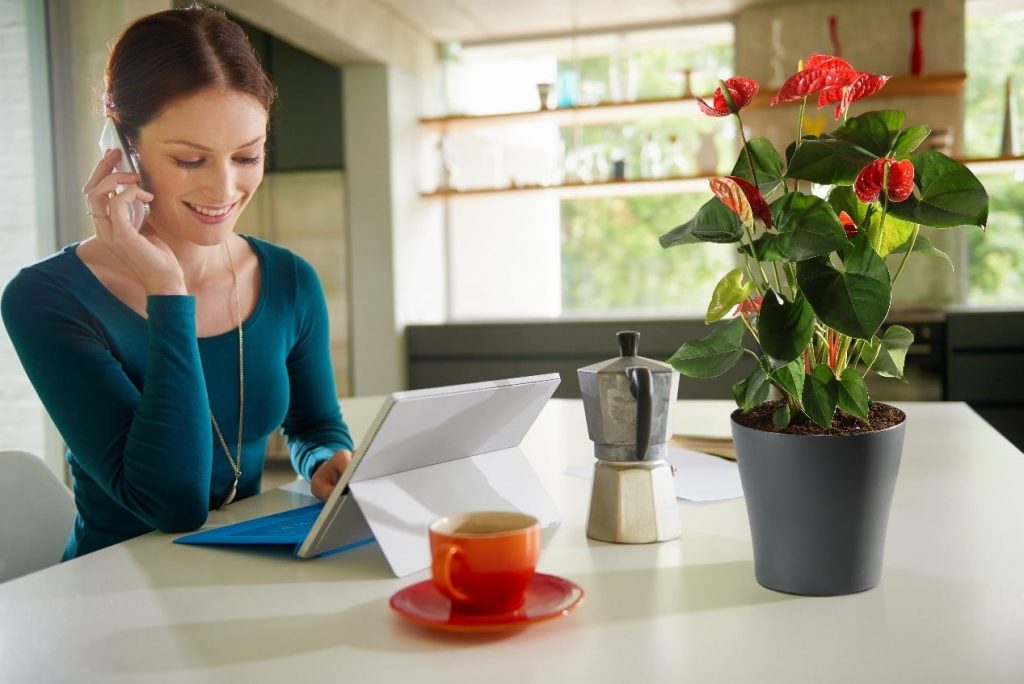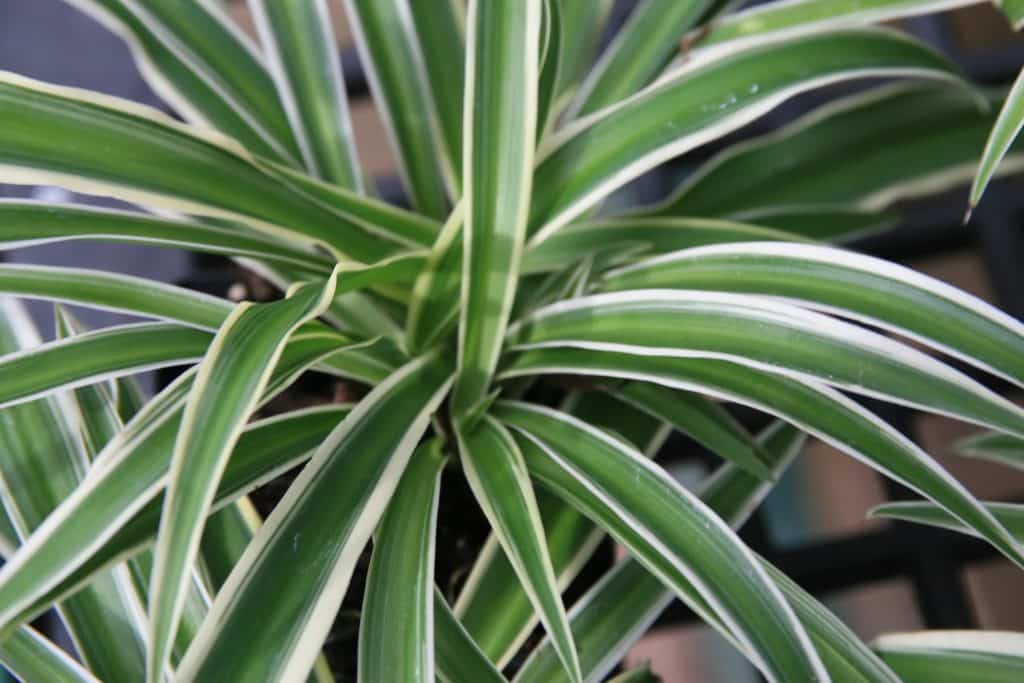Depolluting plants to purify your home
Pollution is everywhere. Even in our homes, where the air is often more polluted than outside. Our lifestyle habits are a source of many potentially harmful pollutants, especially in confined spaces where the air is too dry and not often enough renewed. Fortunately, some plants are valuable allies in cleaning the atmosphere.
Table of Contents
Pollutants in every room
We spend about 80% of our time indoors, at home or in the office. However, the air is 10 to 100 times more polluted than outside and pollutants are sometimes 15 times more concentrated.
The air we breathe contains all kinds of volatile pollutants from household products, building materials, floor coverings, paints, wallpapers or furniture, certain household appliances or heaters, deodorants, tobacco, etc.
Overview of the main domestic pollutants
- Ammonia: related to household and DIY products.
- Benzene: comes from inks, paints, plastics, detergents, cigarettes, DIY products or furniture.
- Formaldehyde: chipboard panels, carpet glues, rock or glass wool, furniture textiles, wallpapers, but also boilers and cigarette smoke.
- Carbon monoxide: emissions from a water heater, gas combustion and cigarettes.
- Toluene is present in varnishes, carpet glues, carpets, wood treatments, so-called aqueous products as well as soaps and lacquers.
- Xylene and trichloroethylene are found in glues, varnishes, paints and degreasers.
Of course, all these substances can have a negative impact on our health. In low quantities, they cause allergies, asthma attacks, headaches and nervousness. However, at high doses, they could have carcinogenic effects.
In the office, in addition to the pollutants related to our lifestyle and the materials around us, other sources of pollution are added, related to the machines and tools used, such as computers, printers, photocopiers, etc.
 Clean up your living spaces with green plants
Clean up your living spaces with green plants
To offset the harmful effects of pollution, it is recommended to surround yourself with green plants. Plants are fantastic air filters. They naturally absorb pollutants through the leaves. They are then filtered and digested by the roots, which transform them into nutrients that are used to nourish the plant.
Through a transpiration process, the plant then emits oxygen in the form of water vapour. It humidifies the air and cleanses it. Moisture levels increase by 4 to 8%, which reduces respiratory problems, asthma and skin irritation.
Depolluting plants: myth or reality?
The concept of depolluting plants originated in a NASA program that tested the ability of different plants to purify the air in space stations. However, recent studies have shown that these closed-loop results are not as relevant in real life situations.
TRUE: Plants are able to absorb certain air pollutants and improve air quality. They help to regulate the ambient humidity and reconnect us to nature.
FALSE: Plants do not significantly alter air quality. In addition, a few plants scattered throughout a home are not enough to clean the air. To have a real effect in an apartment, you would have to consider a mini jungle, with plants in the ground in each room.
Therefore, to purify the air in your home, it is recommended to ventilate for 10 minutes each morning, keep a good level of humidity (between 40 and 70%) and choose your cleaning products carefully.
Indoor plants therefore have a neutral role at best, provided they do not use pesticides and make sure they do not create moisture problems. However, it is undeniable that green plants are a source of well-being. They soothe and contribute to general comfort, at home and in the office. And it’s already a great asset!
Some experts recommend having between 4-6 plants per person in an entire house. Here are some suggestions:
- Living: Areca, Spathiphyllum, Chlorophytum comosum
- Kitchen & bathroom: anthurium and Azalea
- Bedroom: the sansevieria and the aloe Vera!
10 depolluting plants that you should test
Some plants have more pronounced depolluting properties than others.
Anthurium
- Advantages: very decorative with its red, pink or white varnished flowers
- Location: kitchen, living room, wet and hot bathroom
- Absorbs: xylene and ammonia (insecticides, degreasers, bleach)
 Dwarf palm tree (chamaedorea)
Dwarf palm tree (chamaedorea)
- Advantages: very effective in dampening the air. It requires little care.
- Location: living room or office, bright room without direct sunlight
- Absorbs: ammonia, formaldehyde, xylene, tobacco smoke, glues…
Chlorophytum
- Advantages: one of the most effective. Robust and very easy to grow.
- Location: bright room without direct sunlight
- Absorbs: carbon monoxide, xylene and formaldehyde
 Dracaena
Dracaena
- Advantages: tufted growth erected at the top of high rigid stems
- Location: entrance, corridor, bright room without direct sunlight
- Absorbs: trichloroethylene, xylene, benzene, carbon monoxide
Ficus benjamina
- Advantages: pretty decorative foliage, good humidifier
- Location: living room, office without direct sunlight
- Absorbs: formaldehyde, xylene, benzene and amonia
 Hedera (ivy)
Hedera (ivy)
- Advantages: drought-resistant, multiple varieties with variegated foliage
- Location: kitchen, living room, workshop, office
- Absorbs: trichloroethylene, xylene, benzene, carbon monoxide
Scindapsus (pothos)
- Advantages: cultivated in suspension or on a stake
- Location: office or workshop, perfect in a freshly painted room
- Absorbs: formaldehyde and carbon monoxide
Spatiphyllum
- Advantages: abundant flowering and decorative foliage, champion of pollution control
- Location: light to shaded room, dimmed lighting
- Absorbs: formaldehyde, trichloroethylene, xylene, and ammonia
Philodendron
- Advantages: can become giant, easy to grow, oxygenates well a room
- Location: living room, loft, heated and bright workshop
- Absorbs: formaldehyde
Kentia (Howea fosterania)
- Advantages: aesthetic and popular palm tree
- Location: living room, loft, landing, veranda
- Absorbs: benzene and hexane


 Clean up your living spaces with green plants
Clean up your living spaces with green plants

 Dwarf palm tree (chamaedorea)
Dwarf palm tree (chamaedorea) Dracaena
Dracaena Hedera (ivy)
Hedera (ivy)
Comments are closed.